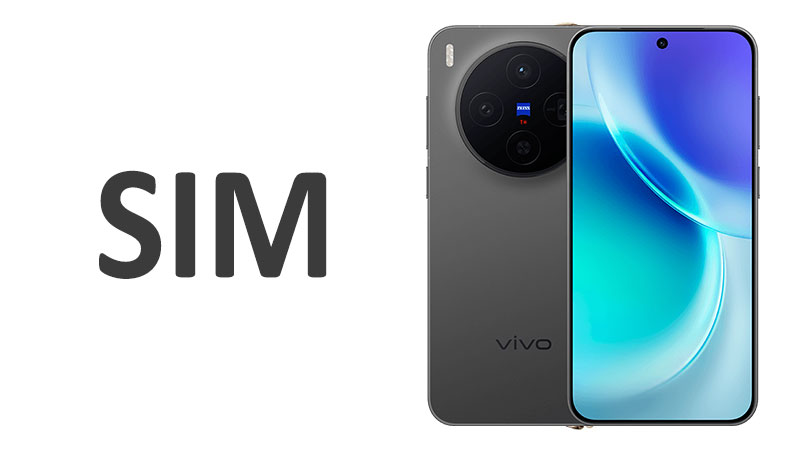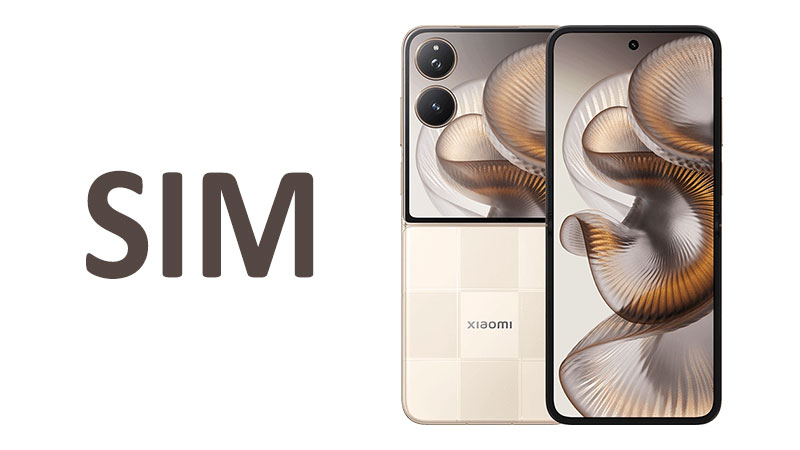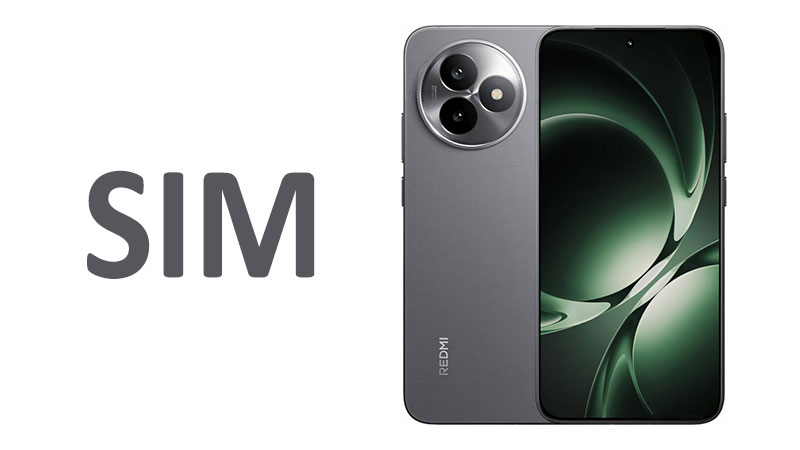The connectivity options of the vivo X300 SIM configuration are a primary consideration for many global users. Understanding how the device handles Dual-SIM, eSIM technology, and its advanced network capabilities is crucial. This new flagship offers a sophisticated and differentiated approach to mobile connectivity. It caters effectively to both international travelers and domestic users alike. This extensive analysis explores the complex SIM tray, next-generation wireless standards, and the overall network performance potential of the device. We will clarify the specific differences between the China and Global versions. This detailed information will help users determine if the vivo X300 meets their demanding connectivity requirements.
Dual-SIM and eSIM Configuration Breakdown
The vivo X300 employs two entirely different SIM structures based on the specific target market. This regional divergence is an important fact. Buyers must fully understand these options before purchasing the device. This split affects user flexibility, especially for international travelers.
SIM Configuration Models
The primary difference lies in the integration of eSIM technology. This embedded SIM offers significant advantages for certain demographics. However, vivo limits its availability to specific geographical regions.
The China Domestic Model: Dual Physical SIM
The version of the vivo X300 sold exclusively in the China domestic market features a traditional setup. This configuration is a straight Nano-SIM plus Nano-SIM arrangement. It allows users to operate two physical SIM cards simultaneously. This is a highly popular arrangement in many Asian markets. It facilitates the simple separation of work and personal phone lines. Furthermore, it supports two separate physical phone numbers on one device. This specific version does not officially support the modern eSIM standard.
The International Global Model: Nano-SIM and eSIM Flexibility
The global or international version of the vivo X300 adopts a more advanced, hybrid approach. This setup supports Nano-SIM plus Nano-SIM plus eSIM. However, the device can only activate a maximum of two lines at any given time. This configuration offers the user far greater flexibility. A user can choose to run two physical Nano-SIMs, just like the China model. Alternatively, they can combine one physical Nano-SIM with a digital eSIM profile. The inclusion of eSIM is a major benefit for global travelers and frequent digital switchers.
Advantages of eSIM Integration
The eSIM capability in the international vivo X300 model offers numerous compelling benefits. It simplifies the process of changing cellular carriers. Users can simply download a new carrier profile digitally. They do not need to physically swap a plastic card.
This digital solution is especially useful for international travel. A user can easily retain their home country physical SIM for critical calls and banking verification. They can simultaneously activate a local data-only plan via eSIM for use in their destination country. This significantly enhances convenience and reduces roaming costs immediately. It also makes switching between multiple carriers much faster and completely seamless.
Dual Active Connectivity Requirement
Regardless of the specific SIM configuration, the vivo X300 supports true Dual-SIM functionality. This means both active lines remain on standby to receive calls and text messages. The user can easily designate which line handles cellular data traffic. They can also switch the active data line quickly in the settings menu. This capability is essential for modern professional users who must maintain two simultaneous active connections. It ensures that incoming calls are never missed on either associated phone number.
Buyer’s Key Decision Point for SIM Setup
Prospective buyers must exercise extreme caution regarding their chosen model. Consumers who plan to import the China version must accept the limitation of no eSIM support. This becomes a major functional restriction for many international travel plans.
The global model, with its Nano-SIM and eSIM option, is the superior choice for most users outside of Asia. It provides the maximum possible flexibility in carrier management. Therefore, buyers should verify the specific model number. They need to ensure they are purchasing the version that includes this critical eSIM feature for future use.
Comprehensive 5G Connectivity and Network Review
The vivo X300 is built upon the very latest standards in mobile networking technology. It fully supports GSM, HSPA, LTE, and 5G standards. This ensures compatibility across virtually all global cellular networks. The integration of 5G is not just a feature; it is a fundamental pillar of the phone’s long-term value proposition.
Advanced 5G Network Performance
The vivo X300 is expected to utilize a cutting-edge flagship processor. This processor includes a sophisticated integrated 5G modem. This modem is designed to support both sub-6GHz and potentially high-speed mmWave 5G spectrum. Sub-6GHz 5G provides extensive coverage and reliable speeds in most urban areas.
The modem technology ensures fast download and upload speeds across supported networks. This rapid data transfer is vital for high-definition video streaming and demanding cloud gaming applications. Furthermore, the 5G integration contributes to lower power consumption when the signal is strong. The phone successfully manages the handoff between various network generations. This creates a remarkably consistent and reliable mobile data experience.
Specialized Comparison: 5G Capabilities
The 5G implementation in the vivo X300 demonstrates a clear generational leap over its predecessor, the X200.
Comparison with Previous X-Series Model
The previous X200 model often relied on an older generation of 5G modem. That older modem might not have supported the complete range of carrier aggregation techniques. The X300’s modem is vastly improved. It supports a broader array of global 5G bands. This wider support translates directly into faster sustained speeds. It also means improved performance and reliability in previously congested urban environments. The new modem is also significantly more energy-efficient. This extended efficiency helps to preserve the device’s battery life during continuous 5G use.
Comparison with Competitor Flagships
The vivo X300 is designed to compete directly with other major flagships like the Samsung Galaxy S-series and high-end Xiaomi devices. These competitors all feature top-tier 5G modems. The X300 matches these rivals on raw speed and technical capability. The key advantage for the vivo lies in its software optimization. The X300’s Funtouch OS is meticulously tuned to manage network switching. This focus ensures the transition between LTE and 5G is incredibly seamless. This consistency is a major selling point for users in mixed-signal coverage areas.
Pros and Cons of Network Connectivity
The overall network offering is undeniably strong. However, buyers should be aware of a few minor trade-offs.
| Pros of Connectivity | Cons of Connectivity |
|---|---|
| Full 5G support ensures long-term future-proofing. | Regional SIM limitations create confusion for international buyers. |
| Dual-SIM capability offers excellent work-life balance. | The overall strength and quality of the specific cellular bands vary by region. |
| The global model includes highly convenient eSIM functionality. | Official support for every obscure global 5G band cannot be guaranteed. |
| Seamless network handoff management is expertly tuned. | Data speed is entirely dependent on the user’s specific cellular carrier. |
This high level of network support is critical for modern smartphone users. The 5G connectivity ensures the phone will remain highly functional for many years.
Advanced Wireless Technologies and Standards
Beyond core cellular connectivity, the vivo X300 packs a powerful suite of advanced wireless features. These features enhance local data transfer, high-fidelity audio, and precise location tracking. This comprehensive package positions the X300 as a leader in all forms of wireless communication.
Wi-Fi 7 Adoption and Speed
The vivo X300 supports the absolute latest standard in wireless networking: Wi-Fi 7 (802.11be). This is a monumental upgrade over the previous generation Wi-Fi 6 and Wi-Fi 6E. Wi-Fi 7 offers dramatically increased throughput speeds. It also provides much lower latency and improved efficiency. This is achieved through advanced technologies like Multi-Link Operation (MLO).
The inclusion of Wi-Fi 7 is a major selling point for users with compatible new routers. It ensures the fastest possible local network speeds for data backups and high-volume media streaming. The device also supports dual-band Wi-Fi (802.11 a/b/g/n/ac/6). This guarantees seamless compatibility with all older, established network hardware. This high-speed Wi-Fi capability is essential for any modern flagship phone.
Bluetooth 5.4 and Audio Quality
The device features the very latest Bluetooth 5.4 standard. This iteration offers improved energy efficiency and enhanced security features over earlier versions. This is critical for maintaining a stable connection to wireless accessories and smartwatches.
Furthermore, the X300 supports high-fidelity audio codecs, including aptX HD and LHDC 5. These codecs allow for near-lossless wireless audio transmission to compatible headphones and speakers. The inclusion of LHDC 5 is particularly important. It signifies a strong commitment to premium audio quality. This is a clear advantage for audiophiles who demand the highest possible sound reproduction fidelity from their mobile device.
Precision Multi-Band Positioning
The vivo X300 utilizes an incredibly robust and highly accurate positioning system. It features GPS with dual-band support (L1+L5). Dual-band GPS significantly improves positional accuracy. It achieves this by filtering out atmospheric interference. This results in far more precise location tracking, especially in challenging environments like deep urban canyons.
The phone also supports a vast array of other global navigation satellite systems (GNSS). This includes GLONASS (L1), BDS (B1I+B1c+B2a+B2b), GALILEO (E1+E5a+E5b), QZSS (L1+L5), and NavIC (L5). This comprehensive, multi-band, multi-system support ensures extremely reliable location services worldwide. It is crucial for navigation apps and location-based augmented reality experiences.
Comparison with Older Wireless Standards
The leap from Wi-Fi 6 to Wi-Fi 7 offers a significant improvement in network congestion handling. The upgrade from Bluetooth 5.3 to 5.4 provides better efficiency for accessories. Most crucially, the advanced multi-band GPS system offers accuracy that older, single-band phones cannot match. This investment in advanced wireless technologies makes the X300 a truly future-proof device.
NFC, Infrared, and USB Features Overview
The peripheral connectivity options of the vivo X300 are also comprehensive and strategically implemented. These features enhance the phone’s utility for daily tasks, commerce, and device management.
NFC and Contactless Payments
The inclusion of NFC (Near-Field Communication) is now a mandatory feature for any modern flagship phone. The vivo X300 fully supports NFC functionality. This enables seamless and secure contactless payment through popular mobile wallets. It also facilitates easy, instant pairing with compatible accessories.
NFC technology provides a secure and highly efficient method for short-range wireless data exchange. This is vital for smart home device setup and quick file sharing. Its reliable inclusion confirms the X300 as a fully compliant device for global digital commerce.
Infrared Port Utility
The vivo X300 features an Infrared Port. This is a highly useful addition that is increasingly rare in the flagship segment. The IR blaster transforms the phone into a universal remote control. It can be used to manage various household electronics, including air conditioners and televisions.
The infrared port is a major convenience feature. It eliminates the need for numerous separate remote controls. This is a strong, differentiated selling point for users in Asia where this feature remains highly valued. The presence of the IR port underscores vivo’s commitment to utility and convenience.
USB Type-C 3.2 and Data Transfer
The device is equipped with a USB Type-C 3.2 port. This is a significant standard for high-speed wired connectivity. The USB 3.2 specification allows for remarkably fast data transfer rates. This is essential for quickly moving large files, such as high-resolution video footage from the camera, to a desktop computer.
Furthermore, the port supports OTG (On-The-Go) functionality. This means the phone can connect directly to external peripherals. Users can attach external drives, keyboards, and mice without needing an intermediate hub. This high-speed, versatile wired connection complements the phone’s advanced wireless capabilities perfectly.
The Absence of Radio
The specification confirms that the vivo X300 does not include an integrated FM radio receiver. This is a common and predictable omission in modern premium flagships. Users who wish to listen to radio content must stream it digitally via the internet. They can use the device’s fast Wi-Fi 7 or 5G connectivity.
Buyer’s Guide: Connectivity Must-Knows
For potential buyers, the technical specifications must translate into practical, real-world benefits. Focusing on these specific connectivity points is vital for long-term satisfaction with the vivo X300.
Verifying Local 5G Band Compatibility
Prospective international buyers must confirm that the X300 model they purchase fully supports their local 5G frequency bands. While the phone is generally robust, specific regional band support can sometimes vary between the Chinese and global hardware models. Lack of compatibility with key local bands severely limits the phone’s maximum speed and coverage. Checking the official vivo specification sheet for the local release is a mandatory step before any purchase is finalized.
The Importance of Wi-Fi 7 Readiness
The inclusion of Wi-Fi 7 is a clear signal of the X300’s commitment to future technology. However, buyers should know that this feature is currently most effective for future-proofing. Currently, very few consumer routers support the full Wi-Fi 7 standard. Users will mostly rely on the device’s excellent Wi-Fi 6 or 6E performance for now. The Wi-Fi 7 capability is a compelling reason to purchase the phone now. This ensures maximum speed compatibility when they eventually upgrade their home networking hardware.
Connectivity for Frequent International Travelers
The international vivo X300 model, with its Nano-SIM + eSIM capability, is arguably one of the most traveler-friendly flagships available. Frequent flyers should actively prioritize this specific configuration. The flexibility to manage multiple phone numbers and seamlessly download cheap local data plans makes global mobility effortless. This eliminates the persistent hassle of seeking out physical SIM card vendors in every new country.
Conclusion: A Highly Connected Flagship
The vivo X300 SIM technology and its overall connectivity suite represent a remarkably strong offering in the premium smartphone market. The phone provides essential features like Dual-SIM support. It also integrates next-generation standards like Wi-Fi 7 and Bluetooth 5.4. These advanced technologies future-proof the device effectively.
Global buyers must prioritize the international model for its valuable eSIM functionality. This feature greatly enhances travel convenience and carrier flexibility. The comprehensive positioning system and high-speed USB 3.2 port further solidify its status as a top-tier connectivity device. The X300 is an excellent choice for users who demand seamless, fast, and highly reliable network access in every situation. This device successfully eliminates almost all connectivity compromises.
Frequently Asked Questions (FAQ)
1. Does the vivo X300 support two active phone numbers at once?
Yes, the device supports true Dual-SIM functionality. It allows two separate phone numbers to be active simultaneously for calls and messages.
2. Is eSIM available on every version of the vivo X300?
No, the essential eSIM functionality is exclusively available on the official international or global versions of the vivo X300.
3. What is the benefit of the phone having Wi-Fi 7 support?
Wi-Fi 7 support ensures the phone is future-proof. It allows for substantially faster data speeds and lower latency with compatible new Wi-Fi routers.
4. Does the phone use standard GPS or a more accurate system?
The phone uses a highly accurate multi-band and multi-system positioning setup, including dual-band GPS (L1+L5) for superior accuracy.
5. Can I use the vivo X300 as a universal remote control?
Yes, the device features an integrated Infrared Port. This allows it to function as a universal remote for managing various compatible household electronics.



